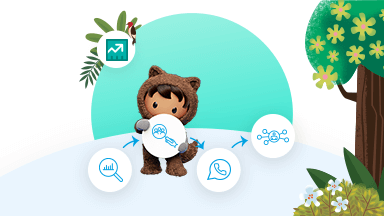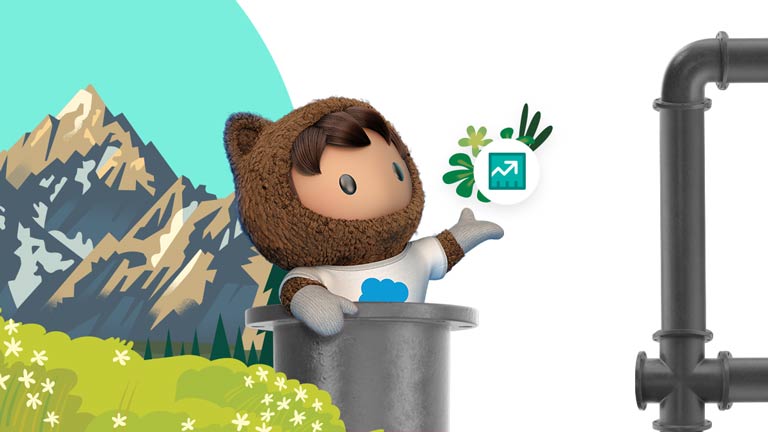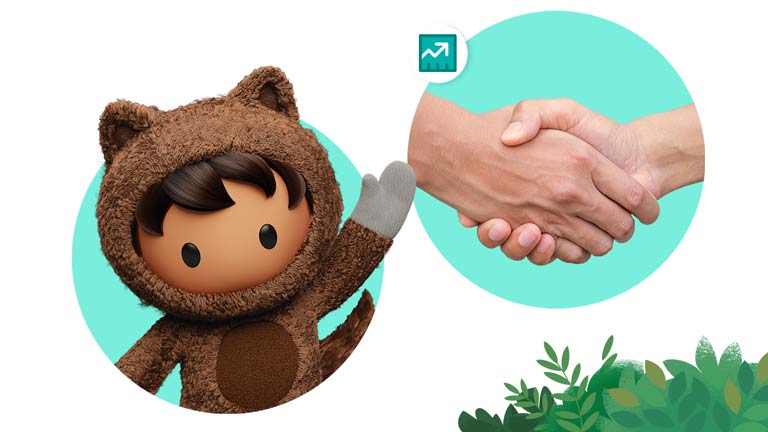Prospects — the potential customers you want to sell to — are the fuel for the sales pipeline. Every prospect represents a possible deal. So growing your base of prospects and working to nurture them will grow your revenue.
Even though prospecting is important, it may sometimes feel like you’re just wishing and hoping the right people will come. Let’s see how to make prospecting a science instead — less like drilling for oil and more like filling up on gas.
What we’ll cover:
- The stages of the sales prospecting process
- How do I find new sales prospects?
- How has the sales prospect changed?
- How can I approach this new sales prospect?
- How do I qualify a sales prospect?
- How can I move sales prospects to the next stage in the sales cycle?
- How can I keep the conversation moving?
What is sales prospecting?
The stages of the sales prospecting process.
FROM LEADS →
TO OPPORTUNITIES →
TO CUSTOMERS
FROM LEADS →
Sales and marketing source leads.
Leads are unqualified prospects. Leads can come from marketing (think a webinar that requires a form fill) or sales (think cold outreach).
TO OPPORTUNITIES →
Sales qualifies leads into prospects
Sales gets to know leads and decides whether they’re a good fit for the product. If they are, the lead is “qualified” to become a prospect.
TO OPPORTUNITIES →
Sales nurtures prospects into opportunities.
As sales makes prospects more interested in the sale, these prospects become “opportunities” who are more and more likely to buy.
TO CUSTOMERS
Sales closes opportunities into deals.
In the end, after many conversations, there will be two kinds of opportunities: “closed-lost” (boo) or “closed-won” (yay!).
How do I find new sales prospects?
1. Follow the prospect before you connect.
2. Find them in groups.
3. Hype them up.
How has the sales prospect changed?
Prospecting used to be a volume play. Salespeople could make 200 calls a day and send out blasts of emails and know that enough of them would stick to be worth it.
Cold outreach is still an important piece of the puzzle, but sales development representatives (SDRs) and sales reps will need to balance broad quantity outreach with targeted quality outreach. Here’s why:
The new prospect isn’t waiting by the phone like they used to.
The new prospect is flooded with more messages than ever.
Our inboxes have never been more crowded. First, in a trend The Economist calls, “It could have been an email,” meetings are getting shorter — by 20%, according to this Harvard Business School study. Conversations that used to happen in meetings are happening in emails instead.
Second, that same study shows that more emails are being sent in the pandemic (by 5%) — with more recipients on average (by 3%), and more frequently after hours (by 8%). The question becomes: How can you capture people’s attention as their inboxes overflow?
The new prospect wants more out of interactions.
“Always be learning: The more you read or learn, the more interests you have to talk about with someone else, and improve your own ability to be successful. Our working and personal worlds keep changing and people want to talk with someone who can provide useful information or advice. Be that person.”
“Always be learning: The more you read or learn, the more interests you have to talk about with someone else, and improve your own ability to be successful. Our working and personal worlds keep changing and people want to talk with someone who can provide useful information or advice. Be that person.”
How can I approach this new sales prospect?
Account-based marketing made a splash when companies began to personalise marketing campaigns to individual companies. Now this trend of personalisation is coming to sales. As Bob Barsdell, Auckland Regional Sales Manager at PlaceMakers, says, "Know the customer, research market trends and be prepared. Busy customers need to know you have depth of knowledge about their industry and know how to solve their problems.”
What are the prospect’s preferred channels? How can you stand out from the crowd? How can you find an authentic common ground that gives the relationship traction? Here are the steps to take:
Lean on customer relationship management (CRM).
Sales prospecting is harder than it used to be, now that we need to be more relevant and personalised with every approach. It takes more time and more care, and it’s harder to scale. We need technology to close the gap. CRM gives you a control room for all your interactions with our prospects — the last email you sent, notes from all of your meetings, and the pitch deck you presented — so all the information you need is at your fingertips.
Learn how Sales Cloud makes it easy to connect with prospects and grow.
Research your way into their world.
Research is the groundwork. If it’s a publicly traded company, read their investor reports. If it’s a small or medium business (SMB), then set up Google alerts to learn about their press, and devour everything they put out there about themselves. Insights about opportunities and accounts (at Salesforce, we use Opportunity Management) help you bring more value to the table.
You’re trying to learn about problems and people, so by the time you reach out, you’re not only saying the right things — you’re also saying them to the right person.
Find the channel that sticks.
Everyone is different. Every approach needs to be different too. Some of us are old school and like to talk on the phone. Some of us live in our inboxes. Some of us really love getting gifts in the mail. How can you find the right channel? The answer is to leave no stone unturned.
If the prospect doesn’t pick up the phone, try connecting on LinkedIn. Still no luck? Reach out again and be as relevant as you can. Craft an email that grabs them. Keep working on the interaction until you see a spark. Earn the right to ask them what their favourite communication channel is — and meet them there.
“Define which accounts or business units of accounts are more transactional and will create a run rate business. Also define which are longer-term more strategic-focused that will generate larger opportunities. Focus on prospecting both in parallel in order to get things kick-started in operating a two-speed business where possible.”
“Define which accounts or business units of accounts are more transactional and will create a run rate business. Also define which are longer-term more strategic-focused that will generate larger opportunities. Focus on prospecting both in parallel in order to get things kick-started in operating a two-speed business where possible.”
How do I qualify a sales prospect?
Qualifying a prospect is an important piece of the puzzle, but don’t mistake “qualifying” for “deciding whether someone is important.” Everyone you talk to is important — because if they’re not the right person to talk to, then they can point you to the person who is.
Here are questions to help you qualify whether a prospect is a good fit:
Is this the right person?
- Does the prospect match your ideal customer profile?
- Are they already interested in your product?
- Can they influence the deal, or even decide to buy it?
Is this the right company?
- Is it in your territory?
- Is the industry a good fit?
- What’s the size of their organisation? (Don’t just think of how many employees they have. If you’re selling a subscription or usage-based service, then also think about the size of their consumption.)
Is this the right project?
- Is the department funded to pay your price?
- Will the project be a priority this year for the company?
- Will the team be using the product for the right use case — in a way that will create an impact?
How can I move sales prospects to the next stage in the sales cycle?
Research is important, but you’ll need more than that to take the conversation to the next level. After all, it’s just as easy for prospects to research us as it is for us to research them. We won’t get anywhere with them by repeating the same general information on your company’s website.
How can you go deep, and bring them an insight that no one else has? You’ll need to learn their accent — not just their language — and become knowledgeable about their lives at work. That means learning about specific trends in their industries, their companies, and even their lives.
“Know the customer, research market trends and be prepared. Busy customers need to know you have depth of knowledge about their industry and know how to solve their problems.”
“Know the customer, research market trends and be prepared. Busy customers need to know you have depth of knowledge about their industry and know how to solve their problems.”
How can I keep the conversation moving?
Don’t just think about closing the deal. Think about closing every step of the deal. It can be easy to get carried away in your excitement to move the conversation along.
Here's how:
Obsess over the next step.
Don’t forget to end every conversation with a question. “Can we connect for five minutes after you’ve taken a look?” “Is there someone on your team I could work with on that?” “If you’re not the right person to ask, can you tell me who is?”
Advance but qualify.
Prospecting is all about marching onward. But don’t over-focus on a deal that won’t be worth the effort. As you move the conversation forward, you need to keep qualifying at the same time. At every stage, ask whether the prospect is still a fit. Qualification also means making sure that they’re ready to move onto the next step.
You won’t have all the answers, but someone else will.
Selling is a team sport. You need to lean on everyone you can to get the information you need. Ask subject matter experts at your company to teach you about a new domain. Reach out to technical and digital advisors to help you map out a solution. Ask marketing for help with a new pitch. You don’t have to do this alone.
More Resources

21 Pro Tips for Sales Reps

21 Pro Tips for Sales Leaders







